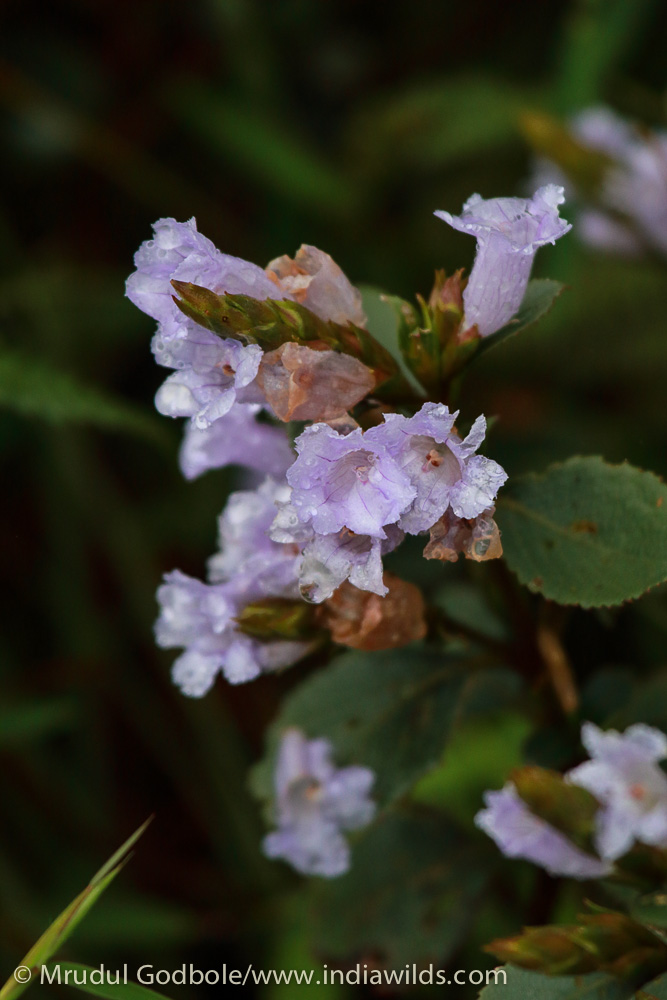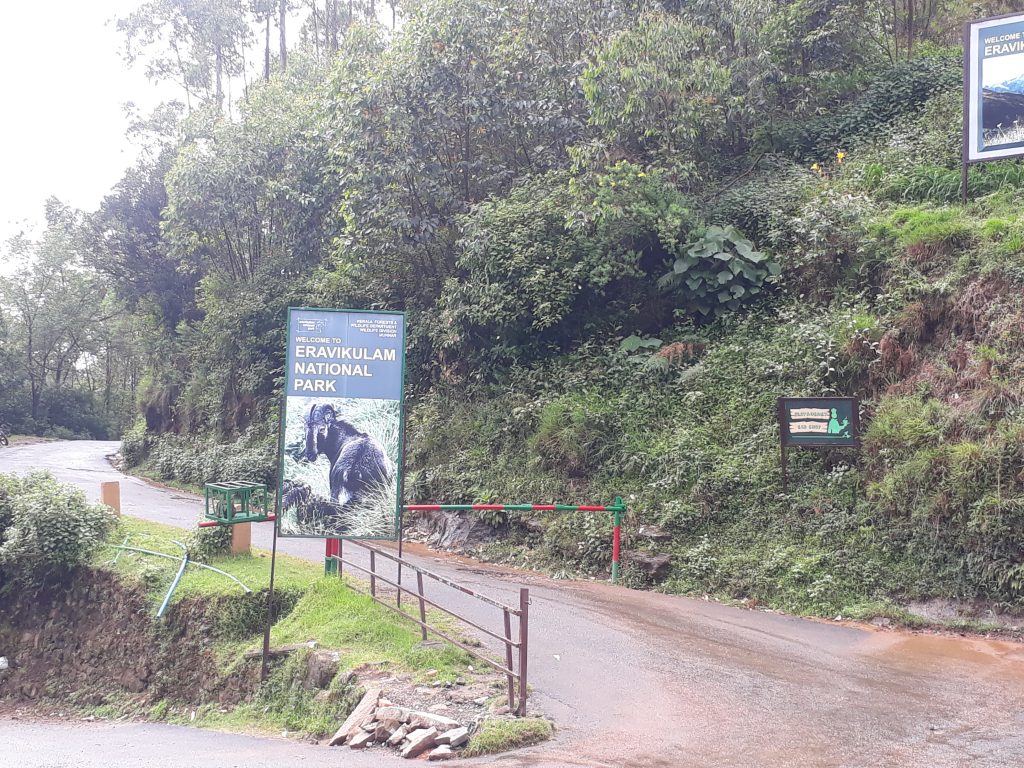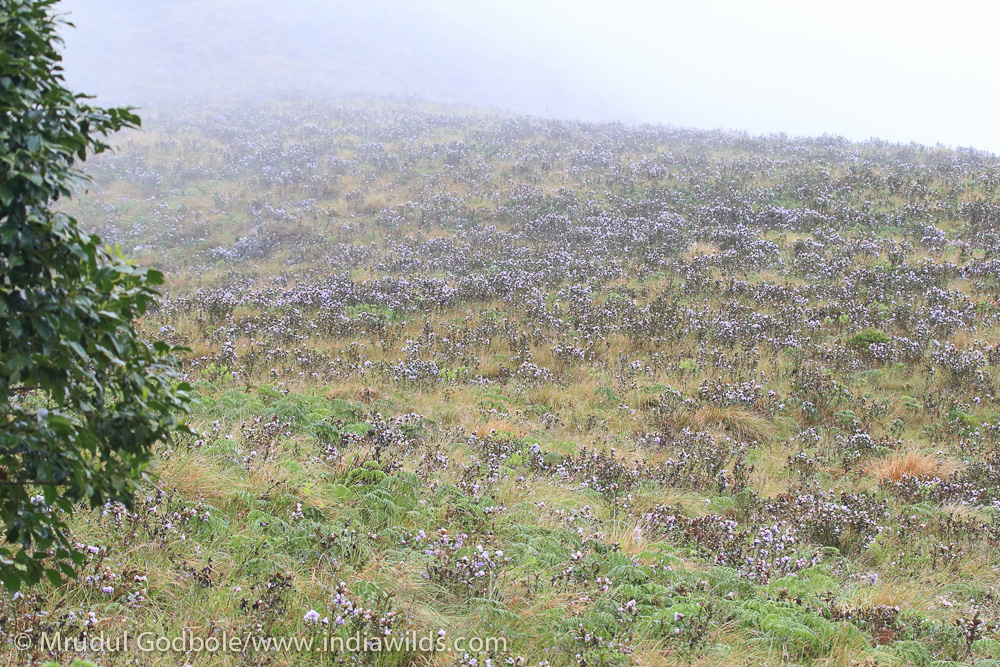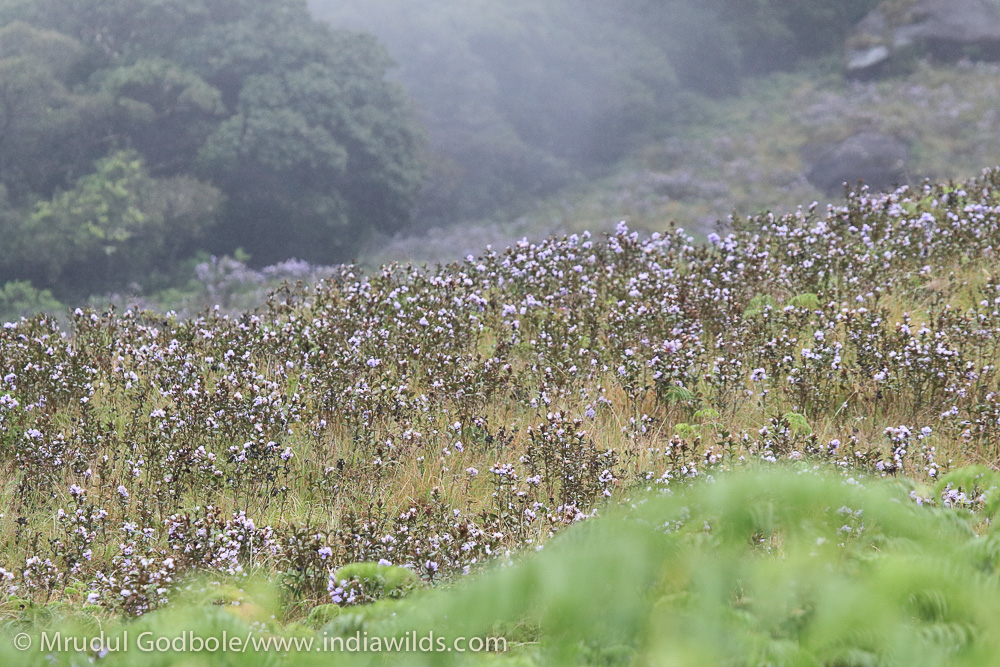A Visit to Eravikulam: Neelakurinji Landscape
We got down from the bus and it started raining heavily. There was a dense fog reducing the visibility to less than a few feet. It was also raining the previous day night. A Red Alert had been declared based on a weather forecast of a cyclonic storm. The next couple of days Eravikulam National Park was to be closed following the orders of the Kerala Chief Minister.
Some tourists decided that it was their only chance to see the famous blossoms of the ‘Neelakurinji’ (Strobilanthes kunthianus) flowers and took out their umbrellas and went ahead on the trek.
We decided to wait. With each passing hour and the rains refusing to relent our desperation was increasing. We had no other means of judging whether the weather was going to clear up. Contrast this with the Neelakurinji which flowers once in 12 years. There is synchronized flowering of all the Neelakurinji flowering plants. These Semelparous species flower once in their lifetime and then die. If the timing of the flowering plant is not right then the rains will completely destroy it.
The flowering season ranges between August and November. This year due to the heavy monsoon in Kerala, it was noticed that the flower blooming was delayed. It shows how nature has a unique way to ensure the safety and survival of each species. How do they know when is the right time to sprout from seed and when to flower?
Scientists have found evidence that plants may have indeed proteins, which behave like prions and are capable of building molecular memory. (Memory in Plants, IndiaWilds Vol. 8 Issue V, May 2016 http://www.indiawilds.com/diary/indiawilds-newsletter-vol-8-issue-v/ ) However, this line of research is yet to be done in the Neelakurinji flowers. We feel this may be the case.
When we can’t correctly predict the rains and the flowers can do that without any scientific equipment, it is natural to get doubts whether humans are indeed the most intelligent species on earth.
The Neelakurinji flowers bloom at high altitudes (above 1600 mts above MSL) like Munnar in the Shola grasslands. The cold, misty mountain tops in the Western Ghats offer the perfect habitat for these flowers. We found lot of bees pollinating the flowers.
The stigma of the Neelakurinji flower is sensitive to touch by the bees. Researchers have noticed that in fresh flowers, the receptive surface faces the entry path of the incoming bee to facilitate the deposition of pollen. Immediately afterwards when the bee is to fly away, the stigma curves backwards so that the receptive surface is moved away from the path of the bee exiting the flower. This prevents autogamy and interference in pollen transfer. (Sharma et al. , Reproductive strategies of Strobilanthes kunthianus, an endemic, semelparous species in southern Western Ghats, India; Botanical Journal of the Linnean Society, Volume 157, Issue 1, 1 May 2008, Pages 155–163 )

Shola grasslands – Western Ghats
The ‘Nilgiris’ meaning Blue Mountains derives its name from these wild Neelakurinji flowers which during its flowering season, carpets the mountain ranges in a carpet of blue.
There are also lot of mythological stories like the one in Tamil literature which says that Neelakurunji is the favorite flower of Lord Murugan or Kartikeya. It gained divine importance when Lord Murugan’s consort Valliammai placed a garland of Neelakurunji flowers around Him as a part of the marriage ritual.

Neelakurinji Flowers
In Tamil, Neela means blue and kurunji is flower which gives the flower the name ‘Neelakurinji’.
Neelakurinji belongs to the family of Acanthaceae. The genus has more than 500 species, of which at least 56 occur in India.
Munnar can be reached from Ernakulum Junction or Madurai by train from Bangalore. The train journey is over-night, reaching early morning at Ernakulum junction and then one can travel by bus/car to Munnar which is around 100kms. This requires advance ticket booking, as trains are normally full closer to weekends and holidays.
We decided to drive from Bangalore, which is around 475 kms and takes around 9-10 hours via Hosur-Erode-Tiruppur-Udumalpet route.
After crossing Udumalpet, the ghat area begins which passes through two wildlife sanctuaries, Anamalai Tiger Reserve in Tamil Nadu and the Chinnar wildlife sanctuary and Marayoor Sandal Reserve in Kerala.
The road is slow as it passes through the jungle with multiple check posts but offers amazing views of the dense shola forest. If you are travelling during/after the monsoon season, then you will be rewarded with stunning waterfalls like the Thoovanam and Lakkam Waterfalls which are on the way. We could see the after effects of the floods like landslides in and on the way to Munnar.
Marayoor is the only place in Kerala to have natural sandalwood forest and so there are couple of forest department security check posts while driving through this part. Marayoor is also famous for Neolithic dolmens and rock paintings.
After crossing these reserves, the well-manicured tea plantations in the Kannan Devan Hills begin on both the sides of the road. This becomes a common landscape in Munnar.
The Eravikulam National park is around 9 kms before reaching the Munnar town by this route. The park is a 97 sq km and is the first national park in Kerala.
After buying the entry tickets, the forest department buses take you up the ghat road and through some narrow hair pin bends till the entry gate of the sanctuary.

Eravikulam National park – Munnar
Amazing view of the high rocky mist covered mountains can be seen on both the sides. From the entry point, one has to walk to the top to view the blossoms.
Finally the rain gods answered our prayers and the rain stopped around 1pm. After repeatedly thanking the rain gods, we got our photography gear out and started to climb. It’s a proper tar road going up the hill with the view of the Neelkurinji blossoms on both the sides.

Neelakurinji flowers
The mist had cleared and finally we could see the famed blue carpet of the purplish-blue flowers. Neelakurinji blooms in a clustered manner on typical inflorescence stocks.
The plant is usually 30 to 60 cm high. The mist gave a very magical touch to the place, clearing and revealing the beauty of nature as it continued to travel through the valley.
If one is lucky you can see the Nilgiri Tahr (Nilgiritragus hylocrius ) at very close range here.
The Tahr which is categorized as ‘endangered’ by the IUCN is endemic to these hill ranges of the Western Ghats of Southern peninsular India. They are found in this terrain of Montane Grasslands and rugged high mountains. The Nilgiri Tahr is closely related to the Himalayan Tahr (Hemitragus jemlahicus) which occurs in the southern flanks of the Himalayas and the Arabian Tahr (Arabitragus jayakari), which inhibits the arid mountains of Sultanate of Oman.
We sighted the Tahr very far off on the next mountain, but luckily after two hours it climbed down the steep slope and we could capture some amazing photographs of it against the evergreen misty mountains in the background.

Nilgiri Tahr (Nilgiritragus hylocrius)
Other species in the shola forests and grasslands include Nilgiri langur, slender loris, giant squirrels, leopards, bears, sambar deer, elephants and jungle fowls. Jungle fowls are said to congregate on the shola grasslands when kurinjis bloom. However, the habitat of Neelakurinji have been fragmented and shrunk due to tea plantations and other anthropogenic pressures. So these days mass migration of jungle fowls to feed on the Neelakurinji seeds have not been observed.
Giving us just enough time to enjoy the beauty of Neelakurinji flowers, the rains started again, signaling that it was 4pm and the park was also about to close.
We returned to Munnar with mesmerizing scenes of the blossoms to keep us company till the next bloom in 2030.

Neelakurinji blossoms
The misty hills, rains and the beautiful blossoms of Neelakurinji (Strobilanthes kunthianus) flowers is a visceral, ethereal and meditative experience. We hope this fragile western ghats landscape is preserved for posterity so that the endemic Neelakurinji can again bloom en masse.
- Exploring Greater and Lesser Rann of Kutch - 11 November,2022
- A Visit to Eravikulam: NeelaKurinji landscape - 10 October,2018











Great views.
Nicely written ! Beautiful pictures !
We had been to Ervikulam/Munnar, last year and there were discussions around about the Neelakurunji flowers and the schedule of their bloom.
Does this flower have a fragrance of its own ? Mild perhaps ??
Thanks for the detailed account of your visit, Mrudul. Very informative and educative.